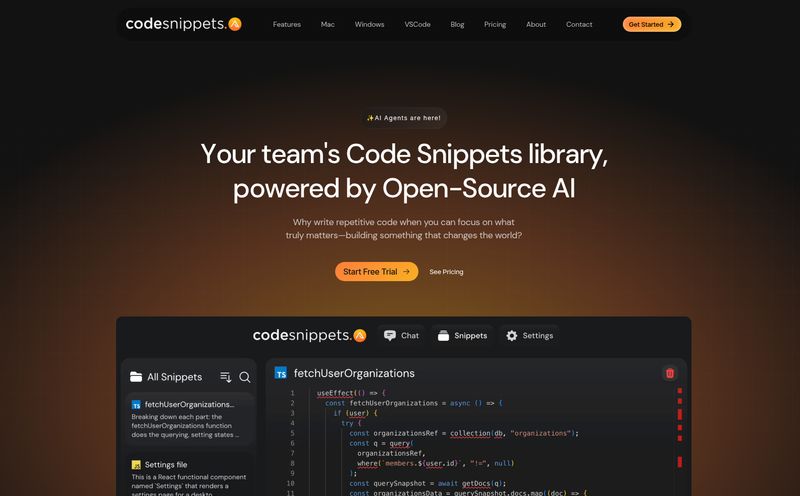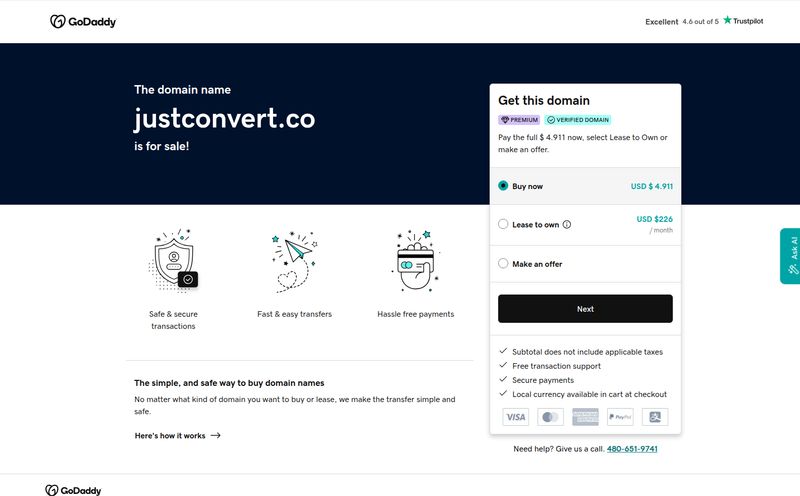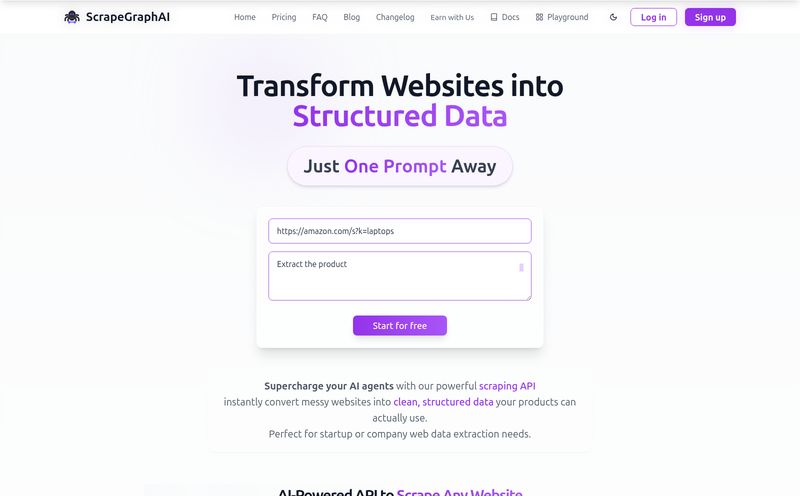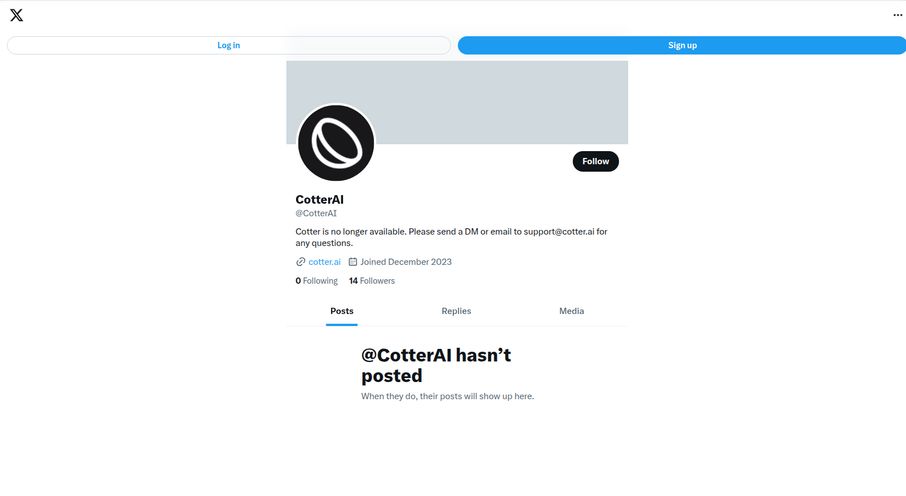If you’ve ever been tasked with making sense of customer feedback, you know the special kind of purgatory that is Spreadsheet Analysis. Hours upon hours spent reading through survey responses, support tickets, and App Store reviews. You're tagging, color-coding, and trying to build pivot tables that don't crash your computer. It’s a soul-crushing, mind-numbing task that makes you question all your life choices.
We collect all this data, promising ourselves we'll uncover golden nuggets of insight. But most of the time, we’re just data-rich and insight-poor. The data sits there, in a massive CSV file, mocking us. Sound familiar?
Well, I've been hearing the buzz about a tool called Viable that claims to be the antidote to this particular poison. It’s an AI platform designed to automate the entire qualitative analysis process. So, naturally, as someone who has spent way too much of my life in Excel hell, I had to take a look.

Visit Viable
So What is Viable, Exactly?
Think of Viable as a hyper-intelligent, incredibly fast research assistant. You feed it all your unstructured customer feedback—from sources like Zendesk, Intercom, surveys, social media, you name it—and it does the heavy lifting for you. Powered by some serious AI, including the much-talked-about GPT-4, it doesn't just count keywords. It reads, understands context, and pulls out the actual themes, sentiment, and even the urgency behind the feedback.
It’s designed to answer the question, “What are our customers really saying?” without you having to manually read thousands of lines of text. A pretty bold promise, if you ask me.
The Core Features That Actually Matter
Every SaaS tool loves to throw a list of features at you. But let's cut through the noise and talk about what actually makes a difference here.
Automated Theme and Urgency Detection
This is the main event. Viable automatically groups feedback into themes. Instead of you creating a tag for “login issues,” the AI identifies all the different ways people complain about it—from “can’t sign in” to “password reset is broken”—and bundles them up. More importantly, it has an urgency score. This is fantastic. It helps you distinguish between a casual feature request (“It would be nice if the button was blue”) and a fire that needs putting out immediately (“I can’t access my account and I’m losing money!”). Prioritization just got a whole lot easier.
Deeper Analysis with Your Own Metadata
This is where things get really powerful. Viable can connect its findings to the metadata you already have. Want to know what your highest-paying enterprise customers are complaining about most? Or what free-trial users are asking for? You can slice and dice the insights by customer segment, plan type, user location, or whatever other data points you track. This turns vague feedback into actionable, targeted business intelligence.
No Per-Seat Pricing Pains
I have to give them props for this one. Viable offers unlimited seats. This is a breath of fresh air in a world where software costs can balloon as your team grows. It encourages collaboration. Your product manager, your lead developer, and your head of customer success can all log in and see the same insights without you having to do budget gymnastics. The same goes for their integrations; they seem to be pretty generous here too.
The Good, The Not-So-Good, and The AI Reality Check
No tool is perfect, right? Let's get into the nitty-gritty. After digging around, here’s my take on the highs and lows.
On the plus side, the time-saving potential is enormous. The hours your team spends manually tagging data can be reallocated to, you know, actually solving the problems you uncover. The depth of the insights also goes way beyond a simple word cloud. And for any company handling user data, their security is a big deal. Viable is SOC 2 Type 2 certified and automatically redacts Personally Identifiable Information (PII), which is a must-have for peace of mind.
However, there are a few things to keep in mind. First, Viable needs a decent amount of data to work its magic—they say a minimum of 500 data points. So if you're a brand new startup with only a handful of survey responses, this probably isn't for you just yet. It’s built for businesses that are already getting a steady stream of feedback.
Second, and this is true for any AI tool, you can't just take its output as gospel. The AI is smart, but it's not infallible. It’s always a good idea to have a human in the loop to validate the themes and ensure the context is being interpreted correctly. Think of it as a powerful starting point, not a complete replacement for human thought.
The Big Question: What Does Viable Cost?
Ah, the age-old question. And in classic enterprise SaaS fashion, Viable doesn’t list pricing on their website. You have to go through the whole “Request a Demo” and “Contact Sales” dance. While I always find this a bit frustrating as a buyer, it usually signals that the product is positioned as a premium, enterprise-grade solution with custom pricing based on data volume and specific needs.
So, don't expect it to be cheap. This is an investment for companies that are serious about becoming customer-centric and understand that manual analysis is already costing them a fortune in employee time and missed opportunities.
Who Should Be Using Viable?
In my opinion, Viable is tailor-made for a few specific roles:
- Product Managers: To quickly validate hypotheses and prioritize roadmap features based on real user needs.
- Customer Experience (CX) Teams: To identify friction points in the customer journey and measure the impact of their initiatives.
- User Researchers: To dramatically speed up the analysis phase of their studies and spend more time on strategic recommendations.
If you're a solo founder or a small team with very little feedback data, you might be better off sticking with the trusty (if tedious) spreadsheet for now. But if your company is at the point where feedback volume is becoming overwhelming, Viable could be a very smart move.
Frequently Asked Questions About Viable
- 1. What kind of data can I analyze with Viable?
- Viable is designed for unstructured text data. This includes survey responses (like NPS or CSAT open-ended questions), support tickets from platforms like Zendesk or Intercom, app reviews, social media comments, and any other text-based customer feedback.
- 2. How secure is my customer data?
- Security seems to be a top priority. Viable is SOC 2 Type 2 certified, which is a high standard for data security and privacy. It also automatically finds and redacts PII (like names, emails, and phone numbers) to protect your users' privacy.
- 3. Is Viable just a fancy word cloud generator?
- No, not at all. While a word cloud just shows you frequent words, Viable's AI understands context, sentiment, and intent. It groups feedback into meaningful themes and tells you why people are saying what they're saying, which is far more actionable.
- 4. Do I need to be a data scientist to use it?
- Definitely not. The whole point of Viable is to make complex data analysis accessible to non-technical users like product managers, marketers, and CX professionals. It’s designed to give you answers in plain English.
- 5. How much does Viable actually cost?
- Pricing isn't public. You'll need to contact their sales team for a demo and a custom quote based on your data volume and needs. Expect it to be priced as a premium B2B SaaS product.
- 6. What are some of the main integrations Viable supports?
- It integrates with a wide range of tools where customer feedback lives, such as Zendesk, Intercom, Salesforce, SurveyMonkey, Slack, app stores, and more, allowing you to pull in data automatically.
Final Thoughts
Look, the firehose of customer feedback isn't slowing down anytime soon. Tools that help us make sense of it all aren't just a 'nice to have'; they're becoming a necessity. Viable appears to be a very strong contender in this space. It's not a magic wand, and it requires a certain scale to be, well, viable. But for the right company—one that’s feeling the pain of manual analysis and is ready to invest in a smarter workflow—it could be the key to finally turning all that customer noise into a clear signal.
It's about getting out of the spreadsheet mines and back to the work of building better products. And honestly, I'm here for that.



